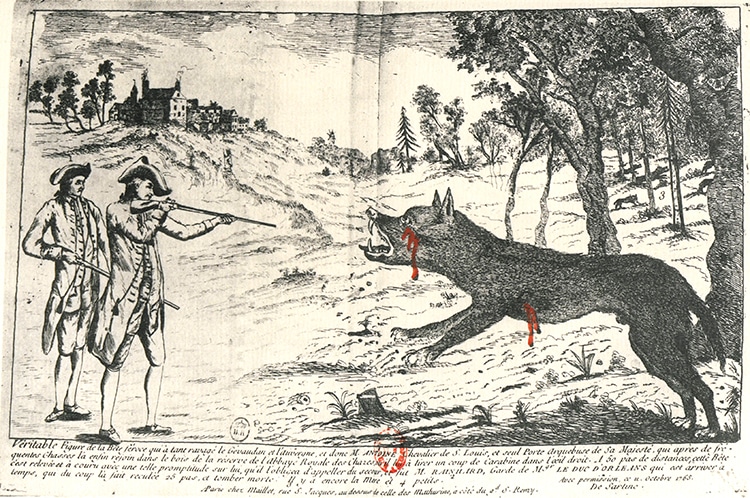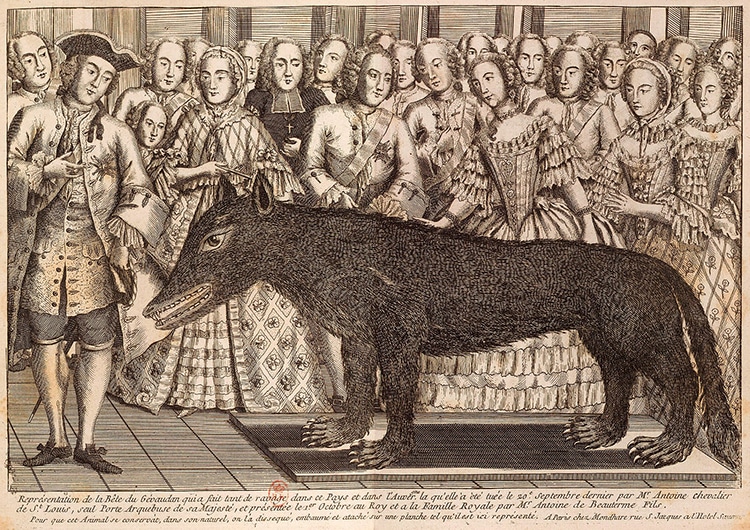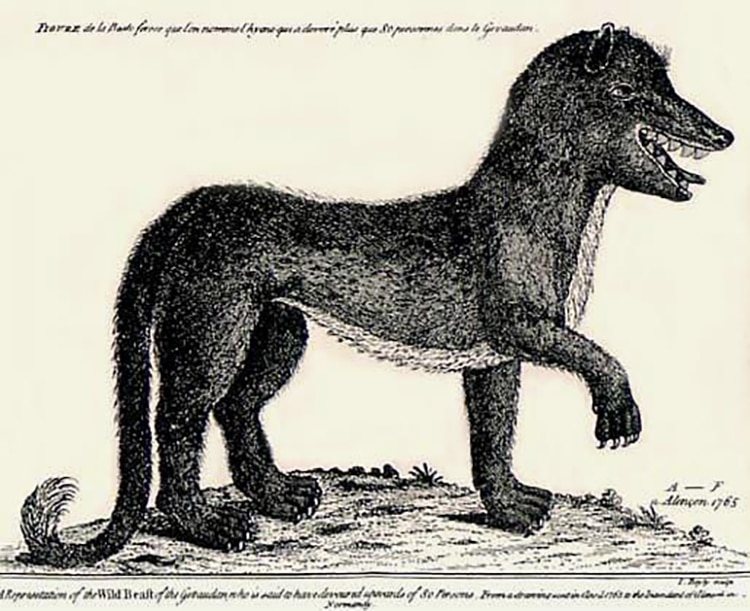Francois Antoine slaying the Beast of Gevaudan, 18th century.
(Photo:Wikimedia Commons, Public Domain)
Legends about werewolves are ancient.
Mentions ofmen morphing into wolvesappear in ancient Near Eastern, Nordic, and Greek literature and myths.

François Antoine slaying the Beast of Gévaudan, 18th century. (Photo:Wikimedia Commons, Public Domain)
But the fearsome werewolves were particularly sensationalized in certain periods.
This created a media frenzy surrounding just what this creature might be.
Described as much larger than an average wolf, it had a long tail like a feline.

Villagers attack the beast. (Photo:Wikimedia Commons, Public Domain)
Its coloring was reportedly brown with a long black stripe and boasted talon-like claws.
It stalked its prey and caused brutal damage, even decapitating many victims.
Near Chazes, the king’s personal gunbearer shot a massive wolf, believed to be the monster.

The Wolf of Chazes on display. (Photo:Wikimedia Commons, Public Domain)
However, attacks continued for several more years.
Across the Atlantic and the English Channel, newspapers worldwide reported on the beast and the deaths it caused.
In 1767, the attacks finally concluded when a hunter, Jean Chastel, shot a massive creature.

The London Magazine depicts the beast in 1765. (Photo:Wikimedia Commons, Public Domain)
The townspeople could finally rest easy, but the mystery of the beast has endured.
Today, the creature is often associated with werewolf legends, but many theories exist.
Depictions of the beast are only mildly helpful, as they are likely vastly exaggerated and based on hearsay.
Still, further speculation, especially based on the decapitations, has suggested a serial killer.
Villagers attack the beast.
(Photo:Wikimedia Commons, Public Domain)
The Wolf of Chazes on display.
The London Magazine depicts the beast in 1765.